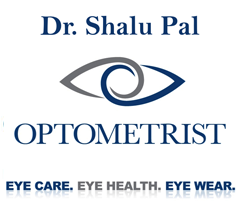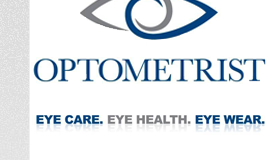The retina is the light-sensitive tissue layer that lines the inside of the eye and sends visual messages through the optic nerve to the brain. As we age certain changes take place that can wear away the retina. Just like your favourite pair of jeans - the more you wear them the more areas of thinness and holes start to appear. In some cases just as your jeans may rip there may be small tears or holes on the retina. These areas can eventually lead to retinal detachment. When the retina detaches it is lifted or pulled from its normal position away from the back wall of the eye. If not promptly treated retinal detachment can lead to permanent vision loss. Although anyone can have a retinal tear or detachment the following factors can predispose people to them:
- High myopia (nearsightedness)
- Older age
- Previous eye surgery
- Trauma to the eye
- Diseases such as diabetes
- Thinning or weakness of the retina
- Family history of retinal tears or detachments
There are several treatment methods for retinal holes tears and detachments. The appropriate treatment depends on the type severity and location of the retinal lesion. On some occasions retinal tears are watched without treatment. But in most cases retinal tears will usually be treated with laser photocoagulation or cryotherapy (freezing) to seal the retina to the back wall of the eye again.
Cryotherapy is a procedure that uses nitrous oxide to freeze the retina sealing any holes or tears. A freezing probe is placed on the outside of the eye next to the tear. This bonds the tissue together. Laser photocoagulation generates thermal energy that creates a series of scars around the retinal tear. This creates a barrier around the tear so that progression is halted. These treatments cause little or no discomfort and are usually performed in-office by a retinal surgeon. Again the determination of which treatment is optimal will depend on the location type and severity of the lesion. If the retinal hole or tear is detected early enough these treatments usually prevent progression to a retinal detachment.
In cases where the retina is detached a procedure called pneumatic retinopexy may be performed. After anesthetizing the eye with an eyedrop the surgeon injects a small gas bubble into the eyeball. The head is then positioned (face down) so the bubble floats to the detached area of the retina where it presses lightly against the detachment. The gas bubble expands and pushes the retina back into place so no more fluid can seep underneath it. The surgeon then uses cryotherapy or laser photocoagulation to seal any existing tears. This treatment is only effective if the retinal detachment is in the top half of the eyeball. The gas bubble slowly absorbs over the next one to two weeks. Complete healing usually occurs within a three-week span.
Some types of retinal detachments because of their location or size are best treated with a procedure called a scleral buckle. Just as you would use a belt around your pants this technique involves attaching a tiny sponge or silicone band to the outside of the eye; it presses inward and holds the retina in position. The scleral buckle is not visible and remains permanently attached to the eye. A side effect of this technique is elongation of the eye which may cause more nearsightedness. Often the retinal surgeon will drain the fluid from under the detached retina allowing it to return back to its normal position against the back wall of the eye. This procedure is performed in the operating room usually on an outpatient basis.
Another form of treatment is called a vitrectomy. This involves the removal of vitreous which is the gel-like substance that fills up the eye and maintains its shape. As we get older the vitreous tends to become more liquefied; as it ages it pulls on the retina which can cause tears or holes. During a vitrectomy several tiny incisions are made through the sclera (the white part of your eye) and the vitreous adhesions are removed to relieve traction on the retina. The vitreous is then replaced with a clear fluid gas or silicone oil. The body is able to remove this naturally over a period of time. In some cases a vitrectomy may be combined with scleral buckle surgery. In certain situations it is common for a combination of surgical procedures to be performed.
After Surgery As with any surgery your activities will be somewhat restricted depending on the type and severity of the tear or detachment. It often takes several weeks or months for retinal tears and detachments to heal completely. Your eye doctor will prescribe any necessary medications and advise you when to resume normal activity. If pneumatic retinopexy is performed your doctor will require you to keep your head in special positions for proper healing. In cases of scleral buckle surgery a change in prescription may be necessary after the retina has been reattached.
Prognosis A retinal detachment left untreated will usually result in permanent severe vision loss or blindness. Most retinal detachment surgery is successful though a second operation is sometimes needed to achieve optimal results. Vision may take many months to improve and in some cases may never fully return. Unfortunately some patients particularly those with chronic retinal detachment do not recover any vision. The more severe the detachment and the longer it has been present the less vision may be expected to return. For this reason it is very important to see your eye care practitioner for regular eye examinations to rule out a predisposition to a retinal detachment. For those with a history of retinal detachments or tears regular eye examinations are also important because there is some risk that the retina can detach again and/or the other eye can become affected.





